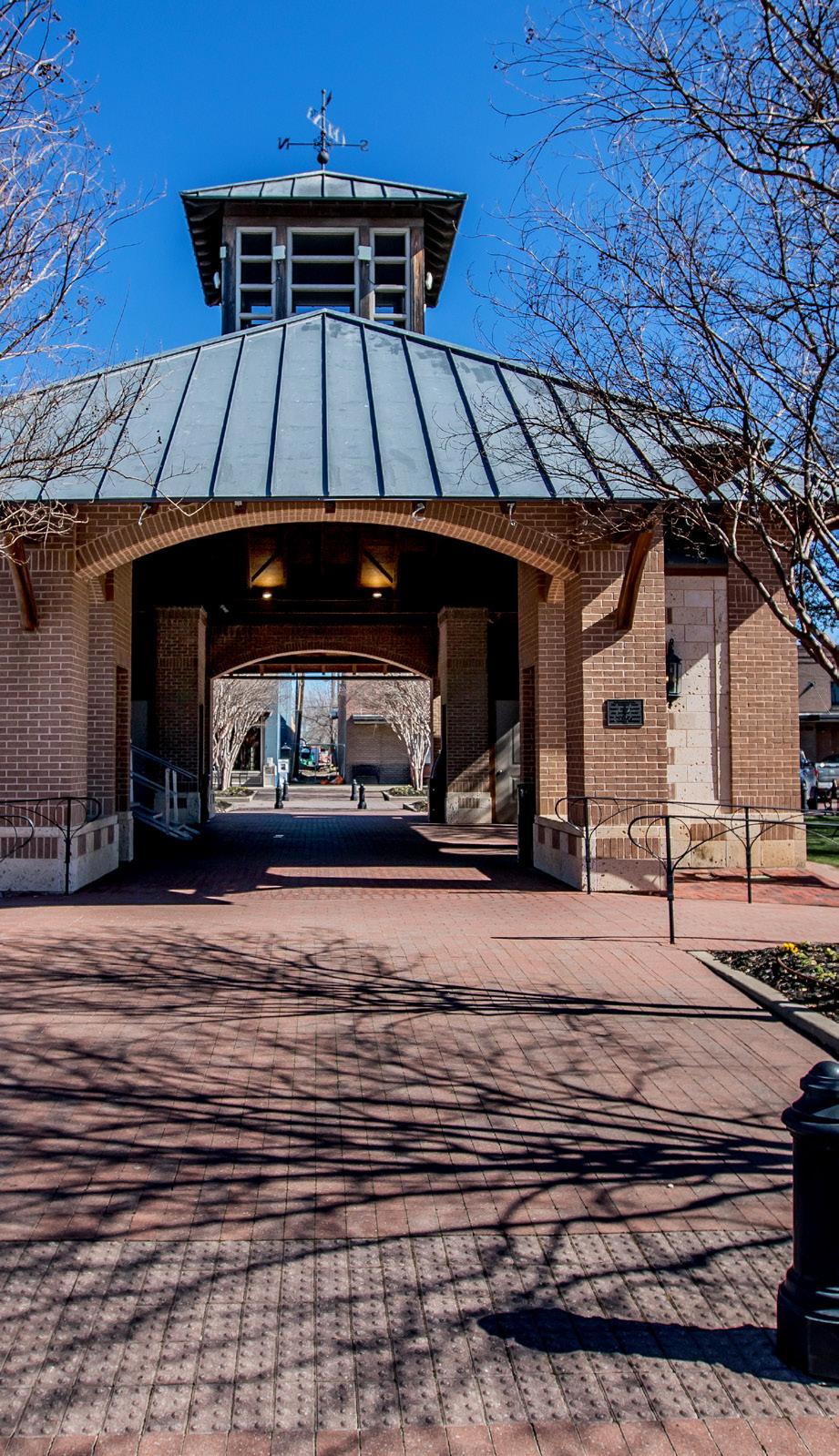
7 minute read
CONNECTED TO County and State Mark Places
Driving around the Lone Star State, residents and guests in Texas will certainly notice the iconic silver and black historical markers dotting the landscape along the highways and byways of our 250 counties. Each gives a verified account of a person, place, or event that impacted the storied history of this state or a county near the marker. According to the Collin County Historical Commission, this county has over 200 State Historical Markers and over 50 County Historical Markers. Surprisingly, with such a storied past, Celina is home to only a handful of these historical markers.
Not that this community is without a story to tell, but the process to have one of these markers placed is labor intensive. Applications go to Austin, through the appropriate county of the potential marker, and can take up to a year for approval by the county or state historical commission. For folks in Celina, the markers already in place tell bits and pieces of the wonderfully rich history of the community. Some of the markers may tell stories more familiar, but some uncover parts of our past that give a new glimpse into the history of our hometown.
The following stories are recorded by current markers and designations in Celina which include:
Celina Historic Square
In 1910, local businessman J. Fred Smith devised a plan to build a downtown shopping area in Celina. Influenced by the “City Beautiful” movement popular at that time, he acquired land, laid out the “Square” and proceeded to build brick buildings around it. This feat was accomplished in eight months. With Smith’s supervision, Celina soon had macadamized streets, concrete sidewalks, an electric plant, and water and sewage systems. Other improvements to the community were a city park, lake, and the first good road in the county named the Celina Pike. Brick streets were added in 1925. In addition to creating a viable shopping center for a small country town, Smith succeeded in creating a place that added greatly to the quality of life for all of the inhabitants in the area. In the succeeding hundred-plus years, the Square and environs that have been host to an opera house, band shell, movie theaters, Saturday drawings, WWII scrap iron collection point, parades, pep rallies, festivals, street dances, outdoor movie nights, veterans’ memorial, and Cinco de Mayo events. A November 1911 article in The Texas Magazine states “The upbuilding of Celina in the last eight months probably has no parallel in the United States.” A very fitting tribute to a man whose tenacity and vision helped create a place he always referred to as “Celina the City Beautiful.” On October 15, 2011, the community of Celina celebrated the Square’s centennial. (Collin Co. Historical Commission)
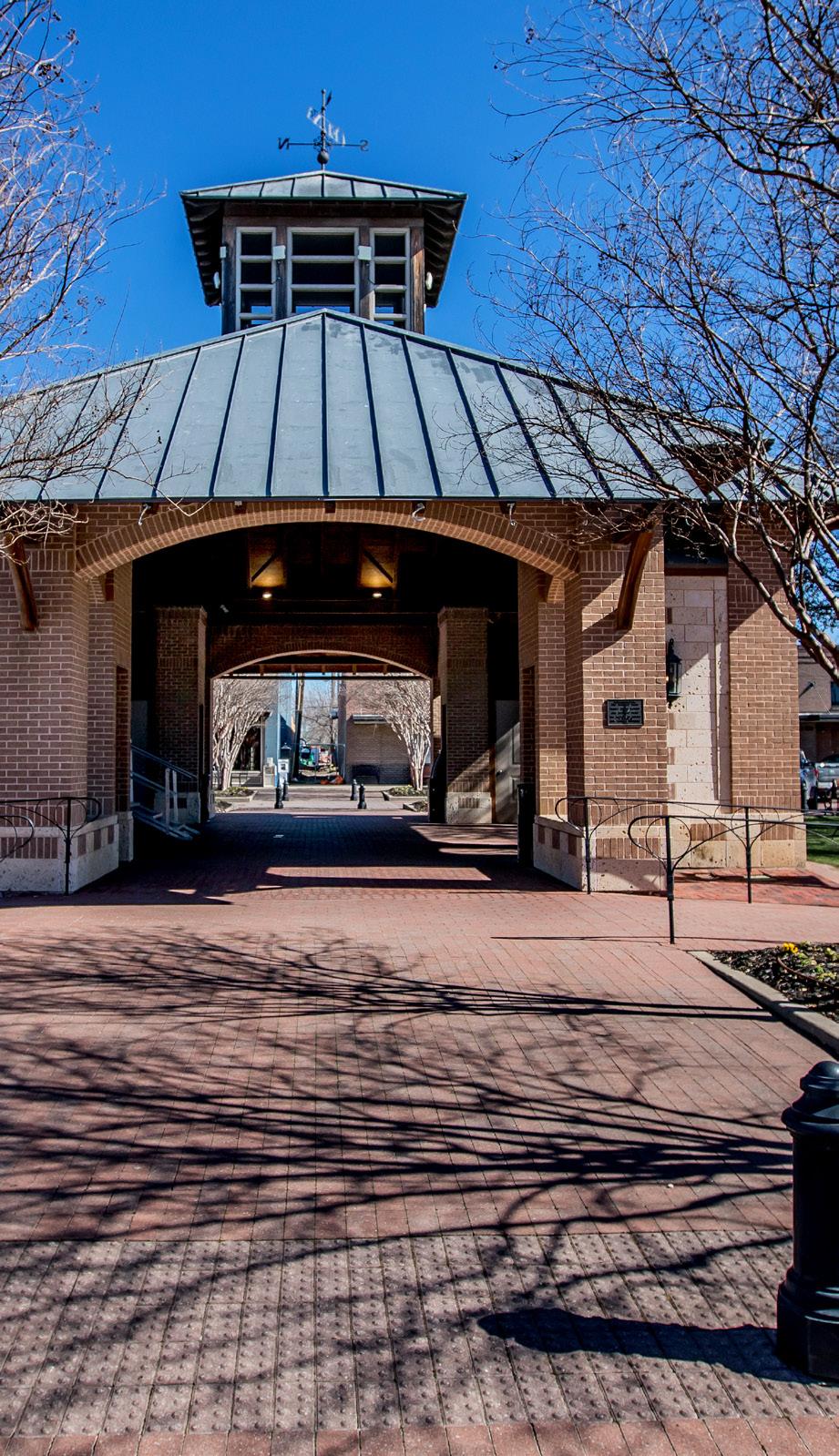
NELSON HOTEL
Early Celina settler Richard Tinsley Peterman built this structure in 1914, 12 years after the town moved from its original site (one-mile south) to the railroad line. The building originally housed a grocery store on the ground floor and rental space on the second floor. Charlie Spergon Nelson, who moved his family to Celina in 1917, bought the property in 1922. The family lived on the first floor and operated the Nelson Hotel for railroad travelers on the second floor. The hotel remained in operation under Nelson family ownership until 1976. (TX Historical Commission, 1991)
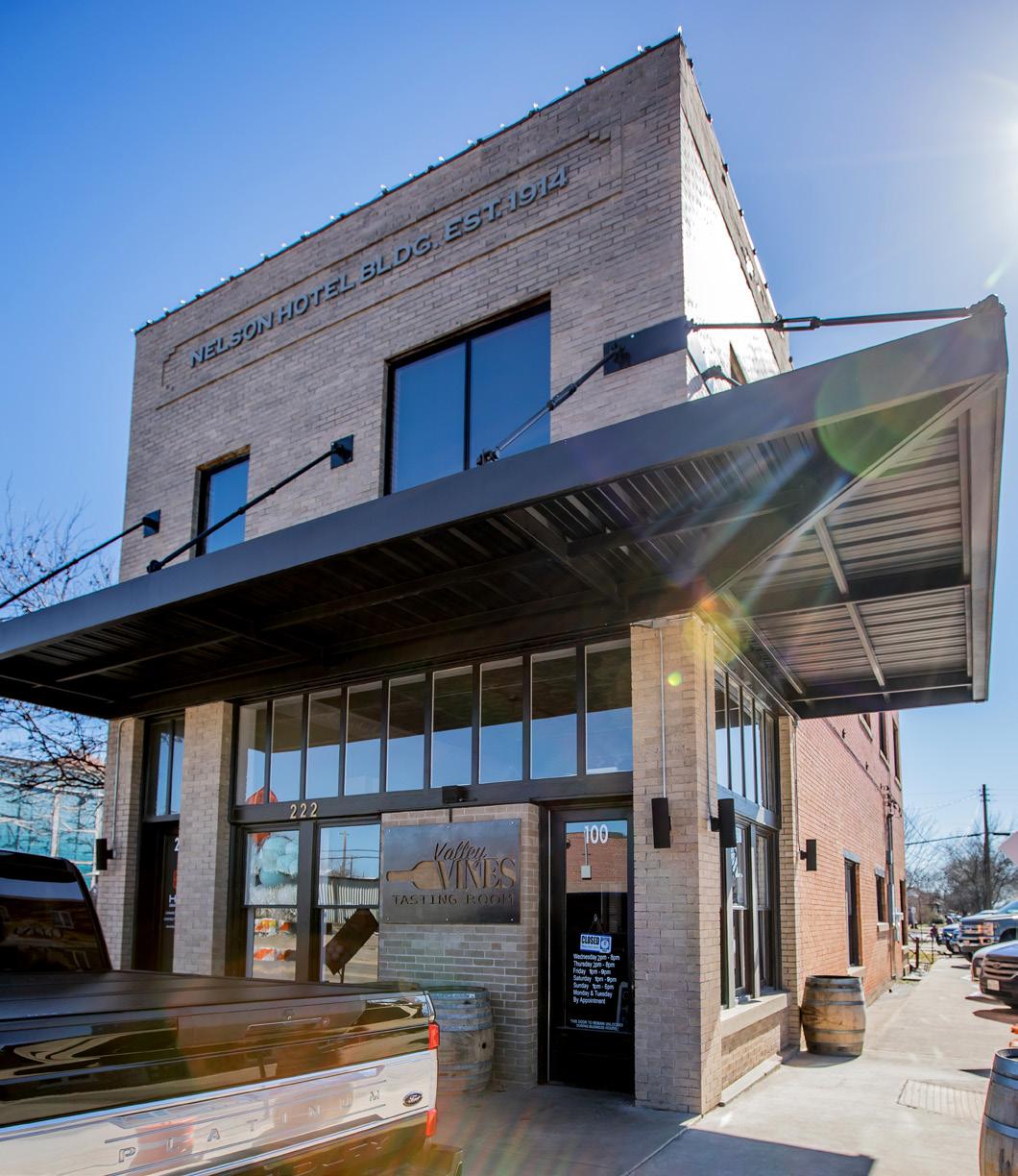
COTTAGE HILL METHODIST CHURCH AND CEMETERY
According to local tradition, this Methodist Church traces its origin to pioneer religious gatherings organized by Rev. John Culwell. The Methodist campground meetings were held at the home of Culwell’s brother, Andrew, as well as the nearby Honey Creek between 1846-48. The first documentary mention of Cottage Hill Methodist Church is contained in the minutes of the Trinity Conference held in Plano in 1874. A church structure was built on land donated by F.F. Morrill at this site in 1881 where H.H. Sullivan served as pastor. The sizable number of early headstones bearing the name Culwell and the many unmarked graves surrounding the gravesite of Martha Culwell (d.1870), the cemetery’s earliest recorded interment, suggests that the Cottage Hill Cemetery began as a family cemetery. Although located adjacent to each other and believed to have been connected as part of the land deeded to the Cottage Hill Church during the 1880s and 1890s, the church and cemetery have not been formally associated since the establishment of the Cottage Hill Cemetery Association in 1890. The church structure, renovated in 1946, continues to serve the Cottage Hill Methodist Church. (Texas Historical Commission, 1992)
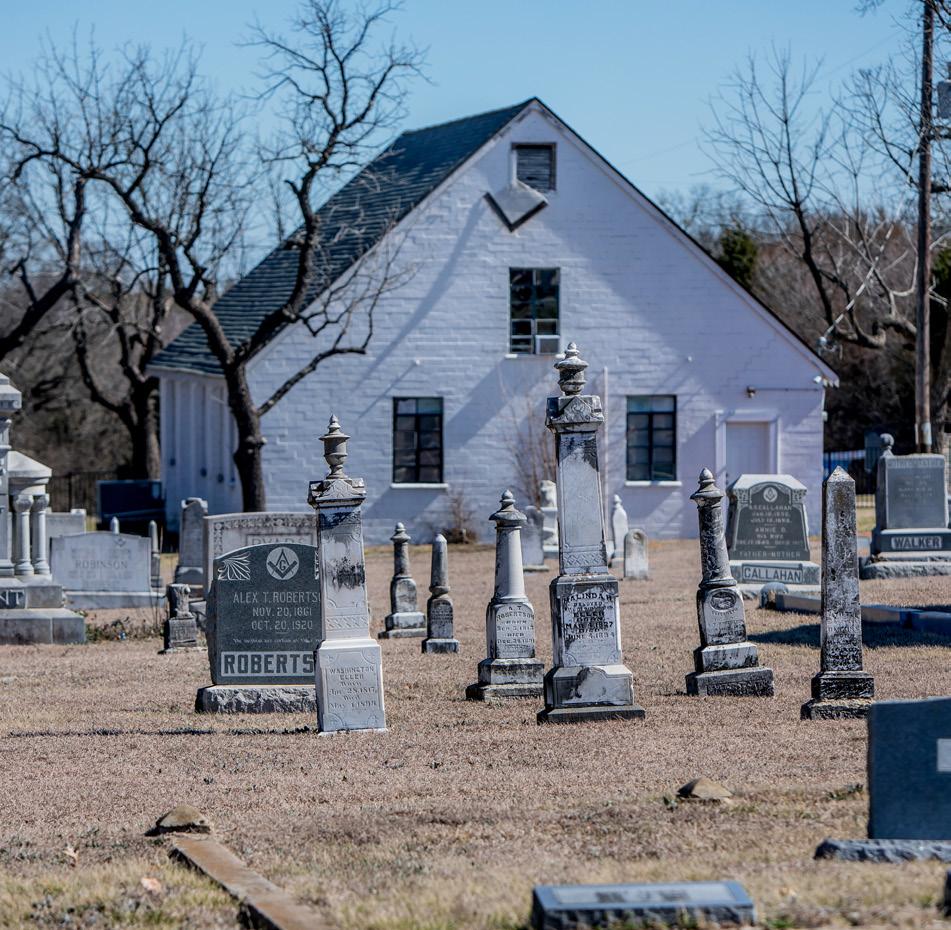
CROSSROADS CEMETERY
The local Baptist community built a church in 1882 approximately three miles east of Celina, just north of the present Crossroads Cemetery. The property, encompassing 1 1/2 acres, had been jointly owned by brothers Abiel D. and Edmond Stelzer. The resulting Crossroads Baptist Church was moved in 1902 to the new town of Celina to be near the St. Louis, San Francisco, and Texas Railway. The church’s name was changed to First Baptist Church of Celina, and in 1930, a quitclaim deed was filed by the church for the Crossroads Cemetery. The earliest marked grave is that of an infant girl, who died in 1875. Today, Crossroads Cemetery continues to serve residents of the area. (Texas Historical Commission, 2006)
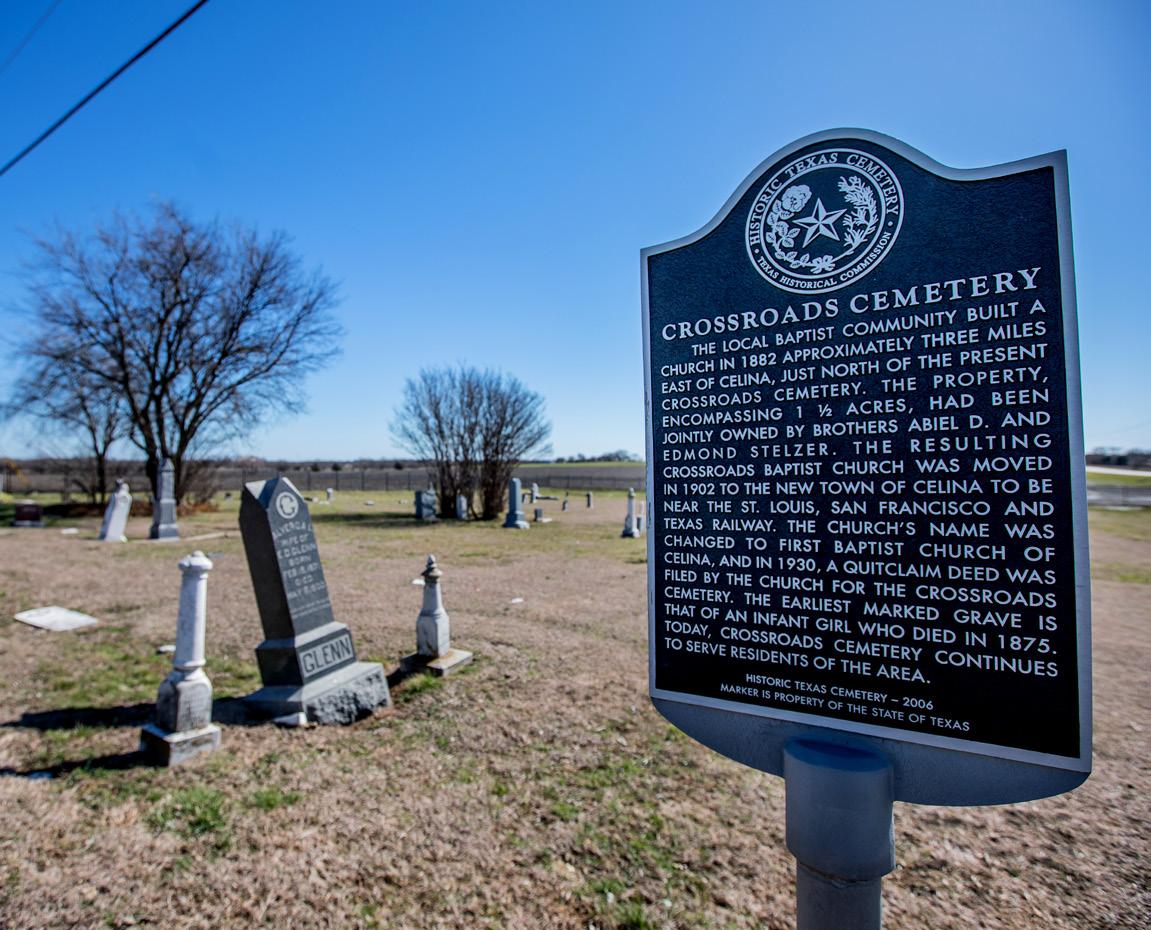
ALLA SCHOOL
In 1866, Moses and Mary Jane Hubbard and their daughter, Alla, moved from Missouri to Collin County, where Hubbard was a successful doctor, farmer, and one of the largest landholders in the area. Concerned with the inadequacy of the local school, the Hubbards supplemented Alla’s education at home then sent her to Pritchett Institute in Glasgow, Missouri, where she earned a degree in Literature in 1880. A talented writer, Alla returned to Texas and married Dr. B.F. Spencer in 1884, but died five years later. In 1895, her parents founded a school in her memory. Named Alla School, it was formed from the consolidation of the nearby Emerson and McWhirter School Districts and was completely financed by the Hubbards. With an initial enrollment of 108, Alla School opened in 1896 with nine grades, no scholastic age limit, no tuition, and an eight-month school term. The Hubbards, aware of the benefits of a solid educational background, instituted these uncommon features at a time when there was little support for free public schools. In 1958, the Alla School merged with the Celina Independent School District. Funds from the Hubbard estate, however, continued to serve public education in the Celina Schools. (Texas Historical Commission, 1983)
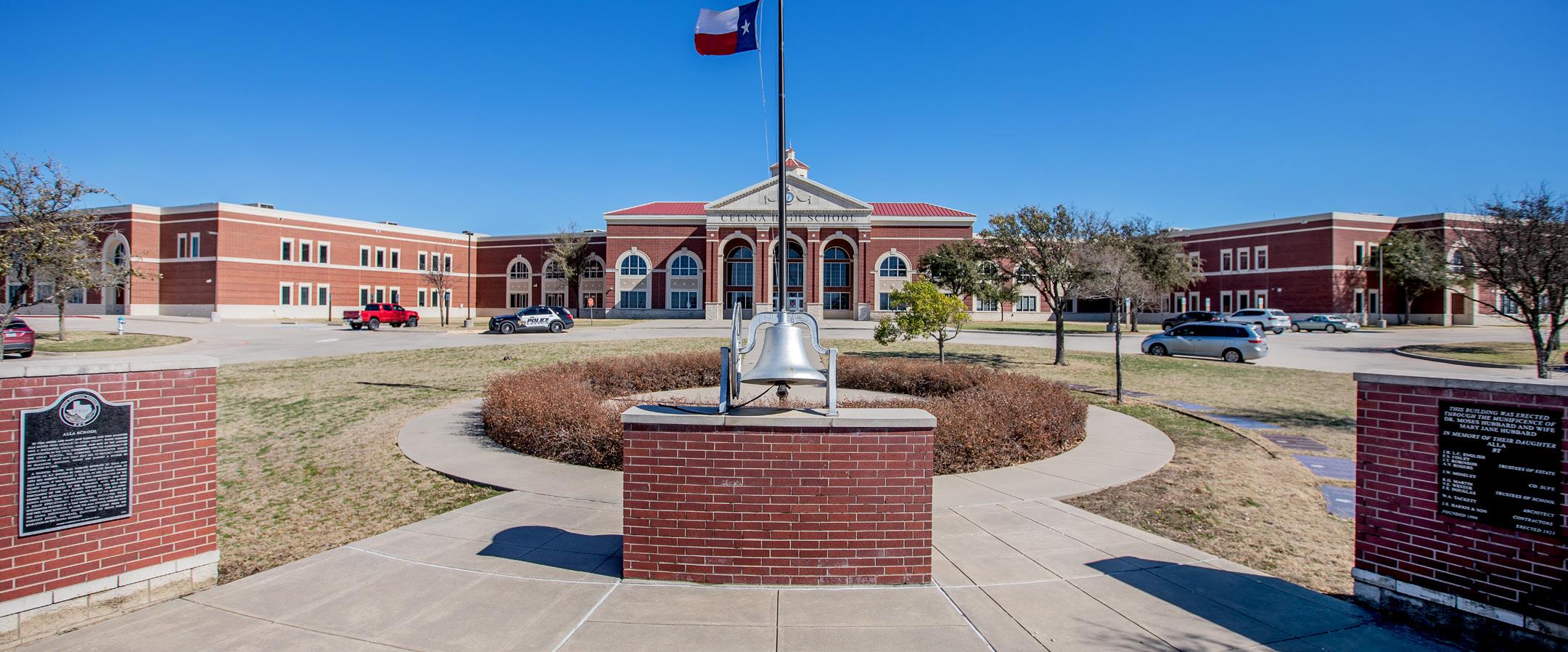
OLD CELINA CEMETERY
The town of Celina, settled by natives of Celina, Tennessee, was founded near this site in 1870. The oldest grave here is that of a child who died in 1884. W.J. Bounds (1830-1886) donated the land as a community cemetery after the death of Elizabeth McWhorter on February 28, 1885. In 1900, residents of Celina began to relocate their homes and businesses along the railroad. By 1910, only this burial ground remained at the original townsite. A cemetery association was formed in 1918. Several more acres were later added to the cemetery, which contains about 600 graves. (Texas Historical Commission, 1976)
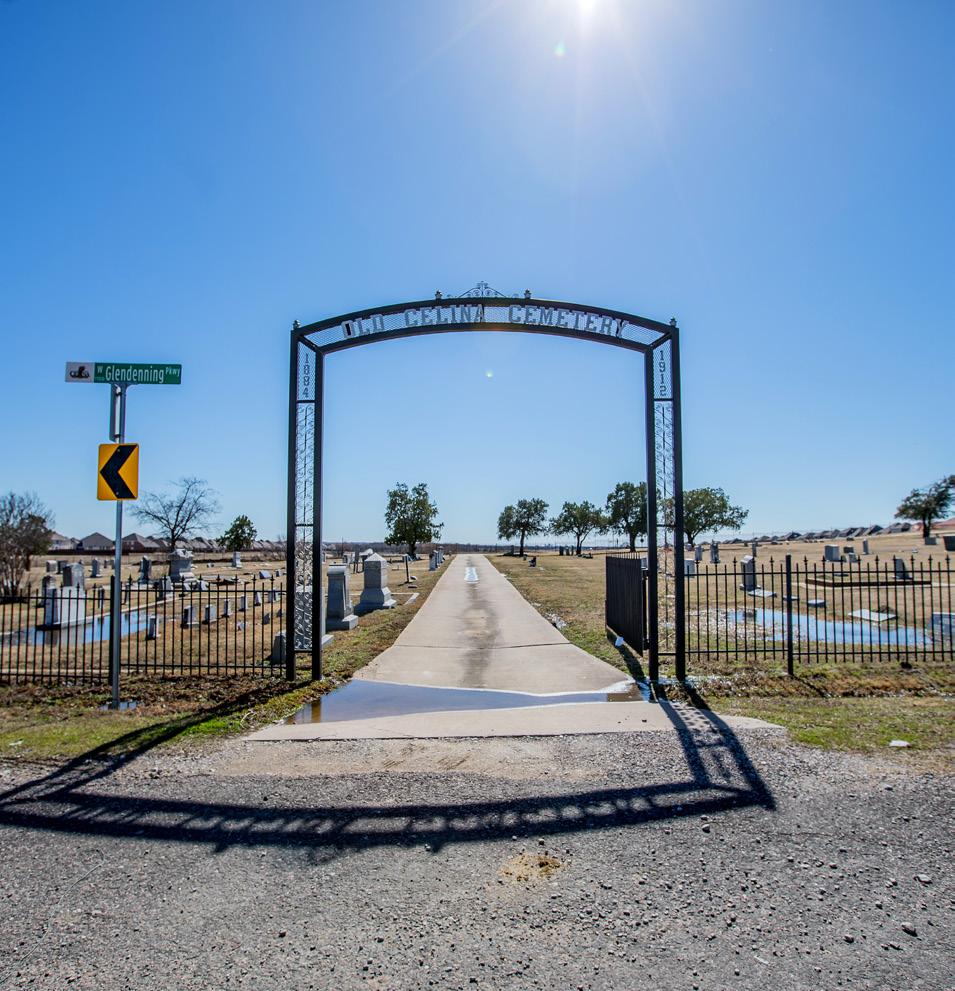
INTERESTED IN APPLYING FOR A HISTORICAL MARKER?
Both the State and County have criteria for being designated with a historical marker. Some of the criteria includes:
• Site is associated with events or locations that have made a significant contribution at least 50 years ago to the cultural, economic, social, archaeological, architectural, or historical heritage of the State of Texas or Collin County.
• Site is associated with persons or groups whose lives were significant in our past.
• Site embodies the distinctive characteristics of a type, period, or method of construction, or represents the work of a master, or possesses exceptional artistic value.
TO LEARN MORE VISIT:
https://www.thc.texas.gov/
https://www.collincountytx.gov/historical_commission


